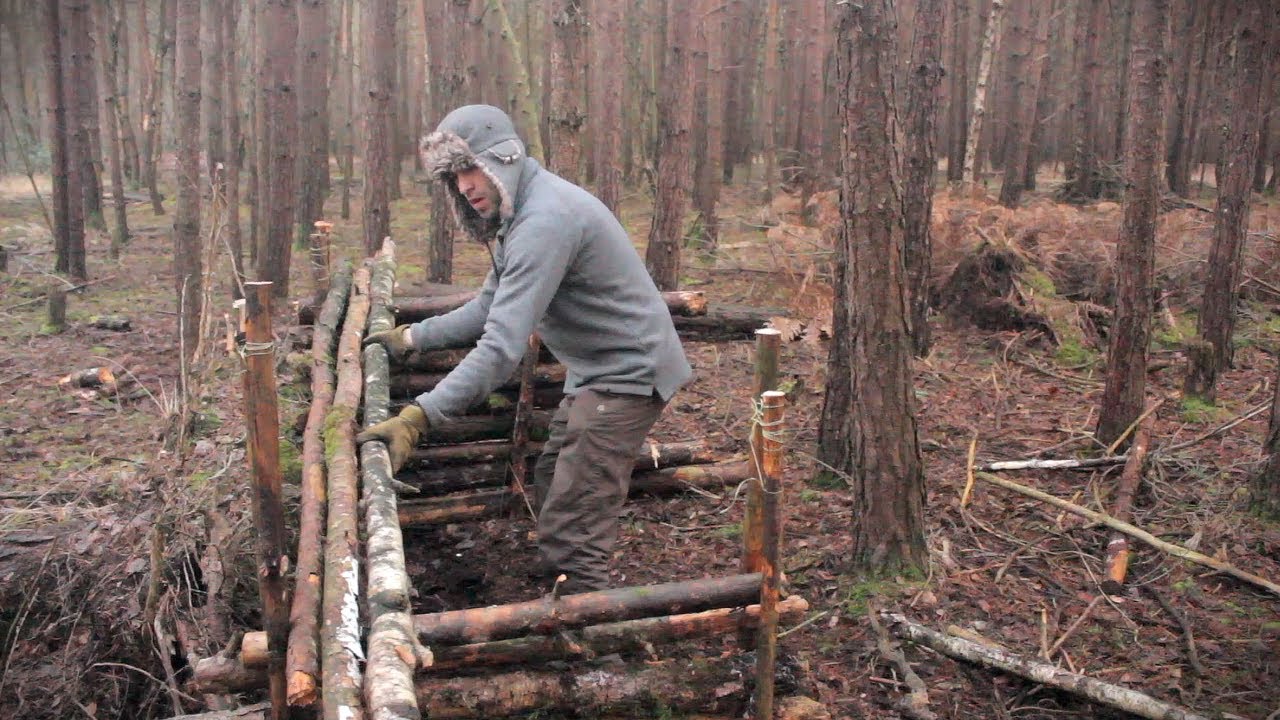5 Bushcraft Shelters – Full Camp Builds Start to Finish

I show you 5 different bushcraft shelters that I have built over the years.
These bushcraft camp builds use a variety of natural materials and man-made materials such as a tarp. The bushcraft shelters range from a simple build with no tools at all, just your hands. To ones where you may need an axe, saw, bushcraft knife etc.
What advantages does a treehouse offer as a bushcraft shelter compared to the other types?
Bushcraft is the skill of living in and with the natural environment. It involves using resources from nature to build shelter, start a fire, gather food and water, and navigate the wilderness. One of the core elements of bushcrafting is building a campsite that can provide shelter and security in the wilderness. In this article, we will explore 5 bushcraft shelters that can be built from start to finish.
1. Debris Hut
A debris hut is one of the most basic bushcraft shelters, but it is very effective. It is built by first creating a framework of sticks and branches. Then, leaves, grass, and other natural materials are piled on top of the framework until it forms a thick, insulated layer. The final step is to create a small entrance and crawl inside. This shelter is warm, dry, and can be constructed quickly with the right materials.
2. Lean-To
A lean-to is another popular bushcraft shelter that provides protection from wind and rain. It is built by first finding a large, sturdy tree or rock face to act as a support. Then, long branches or poles are leaned against the support structure. Finally, smaller branches are interwoven to create a solid roof. This shelter is easy to construct and provides ample space to sleep or store supplies.
3. A-Frame
An A-frame shelter is a little more complex to build than a debris hut or a lean-to, but it provides excellent shelter from the elements. It is built by creating two support structures out of long branches or poles. Then, a ridgepole is placed across the two supports, creating an A-shape. Finally, smaller branches and leaves are used to create a thatched roof. This shelter is strong and can be made large enough to accommodate several people.
4. Wickiup
A wickiup is a type of shelter that is commonly used by Native American tribes. It is similar to an A-frame shelter, but it has a more rounded shape. It is constructed by creating several long, sturdy poles and then bending them into a circle shape. These poles are then leaned against a central support structure, creating a dome shape. Finally, smaller branches and leaves are used to cover the structure, creating a thatched roof.
5. Treehouse
If you have more time and resources, you can build a treehouse as a bushcraft shelter. This provides a more long-term solution and can be used as a base camp for extended trips into the wilderness. It is built by finding a tree with a sturdy trunk and creating a frame around it. Then, walls, floors, and a roof are added to create a comfortable, elevated living space. This type of shelter requires more time and skill to build but is rewarding and can be customized to suit personal needs.
In summary, bushcraft shelters are essential for survival in the wilderness. There are many options available, from the basic debris hut and lean-to to the more complex A-frame, wickiup, and treehouse. Each shelter has its strengths and weaknesses, but with careful planning and skillful construction, these shelters can provide warmth, security, and a safe haven in the wilderness.









Spying On The Scammers
Amazing Cockpit View! US Navy Blue Angels Team
Luxury Modern Small Home Built In Suburban Backyard
wow-is-this-an-axe-or-a-laser-beam?
Prostitute-Amber